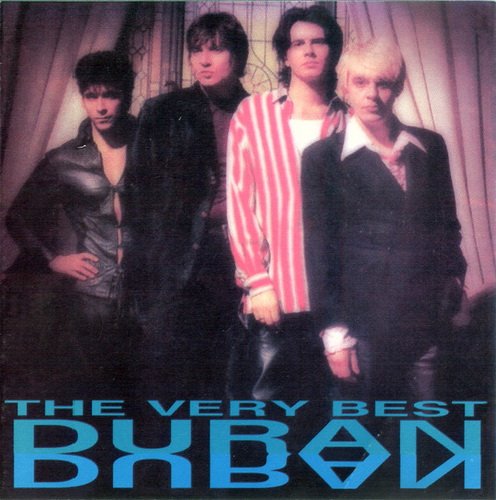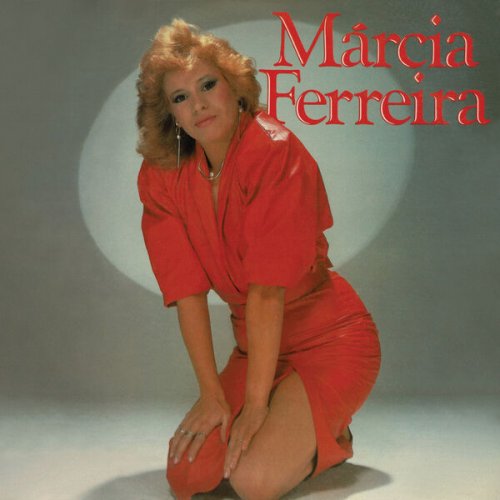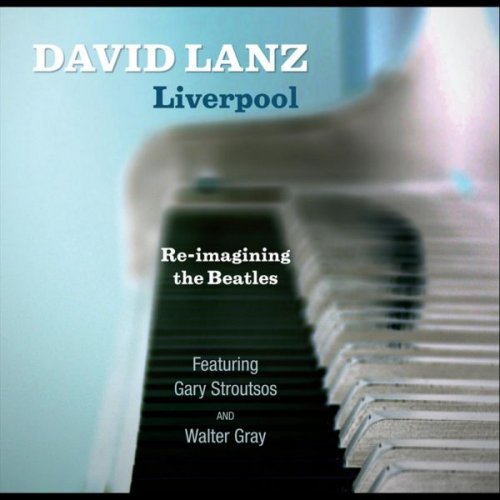Duran Duran - The Very Best (2003)

Artist: Duran Duran
Title: The Very Best
Year Of Release: 2003
Label: Not On Label (Duran Duran) – 7 88462 2301 2 / CD, Compilation, Unofficial Release
Genre: Synth-pop, Pop Rock
Quality: 320 / FLAC (tracks+.cue,log artwork)
Total Time: 1:11:57
Total Size: 174 / 521 Mb
WebSite: Album Preview
Tracklist: Title: The Very Best
Year Of Release: 2003
Label: Not On Label (Duran Duran) – 7 88462 2301 2 / CD, Compilation, Unofficial Release
Genre: Synth-pop, Pop Rock
Quality: 320 / FLAC (tracks+.cue,log artwork)
Total Time: 1:11:57
Total Size: 174 / 521 Mb
WebSite: Album Preview
01. Big Thing (3:39)
02. Too Much Information (4:55)
03. All She Wants Is (4:32)
04. Ordinary World (5:38)
05. I Don't Want Your Love (4:03)
06. Come Undone (4:37)
07. Do You Believe In Shame? (4:24)
08. Thank You (5:04)
09. Wild Boys (4:13)
10. The Reflex (5:28)
11. Union Of The Snake (4:19)
12. Notorious (4:16)
13. Skin Trade (5:56)
14. Planeth Earth (3:59)
15. Girls On Film (3:29)
16. Hungry Like The Wolf (3:25)
I was 13 years old in 1984, and MTV was less than two years old. My friends and I were captivated by “music TV,” and never more so than when British band Duran Duran, which was composed of five good-looking men, captivated Americans with their exotic videos. “New Moon on Monday” was the first song that garnered my attention, and I joined millions of other screaming girls across the globe to become a “Durannie.” And now after a lengthy, undeserved wait, the band enjoys induction into the Rock and Roll Hall of Fame.
Formed in 1978 in Birmingham, England, by guitarist John Taylor and keyboardist Nick Rhodes, along with another friend, Duran Duran named themselves after the villain in the 1968 sci-fi movie “Barbarella.” Band members changed over the next couple of years, and Taylor eventually switched to bass, teaching himself to play. By May of 1980, they had formed the lineup that would soon become part of the “Second British Invasion,” with the additions of Roger Taylor on drums, Andy Taylor on guitar (none of the Taylors are related) and, lastly, Simon Le Bon on vocals.
Heavily influenced by artists such as David Bowie, The Beatles, Sex Pistols and Chic, the young band rode the wave of popularity of the New Romantic movement in the U.K., complete with ruffle shirts and heavy makeup. Their inaugural, self-titled album did well in their native country. However, they were still relatively unknown in America – until a new cable channel changed the course of music history.
Music videos had been around for a few years in the U.K., but not in the U.S., when MTV debuted in 1981. Most of those early videos were low-budget, with the performers standing on a stage singing. However, Duran Duran, with the help of future film director Russell Mulcahy, filmed a series of innovative music videos on location in exotic locations Sri Lanka and Antigua. Instead of simply standing on a stage playing their instruments, the band members created stories to their music, influenced by such popular films as “Raiders of the Lost Ark” and “The Road Warrior,” and used 35 film instead of videotape for a more polished look. MTV executives were looking for new talent in 1982 and more visually captivating videos. They saw the “Hungry Like the Wolf” production; impressed, they began to play it multiple times a day. Duran Duran had received little air play on the radio up to that time; the video created a huge demand for their music. Before long, the young performers – just in their early twenties – were dubbed the “Fab Five” as the hysteria surrounding them was every bit as huge as “Beatlemania” had been 20 years before.
The band’s innovative ideas didn’t stop with the videos. They were among the first bands to make their own remixes, at times recording completely new and multi-layered extended versions of their songs, dubbed “night versions.” They were also among the first to provide video screens above the stage during live performances, which was utilized in the video for “The Reflex.” In 1984, Duran Duran won the inaugural Grammy Awards for Best Short Form Music Video, for both “Hungry Like the Wolf” and the controversial “Girls on Film,” and for Best Long Form Music Video, for the pioneering compilation video album “Duran Duran.”
Duran Duran was everywhere, plastered on the covers of all the teen magazines, and created mass hysteria wherever they went. Such rapid success, overwhelming attention and exhausting tour and recording schedules took its toll on the band members. They eventually opted to split temporarily, with John and Andy forming Power Station with Robert Palmer and Tony Thompson, and Le Bon, Rhodes and Roger forming Arcadia. Although the band reunited to produce the theme song to the James Bond film “A View to a Kill,” their performances at Live Aid in July, 1985, would be the last time the original five members would perform together for almost two decades, as Andy and Roger opted to leave the group. It seemed to be the end of an era.
But just when Duran Duran was written off as a 1980s flash-in-the-pan, the other three regrouped and came back with “Notorious” in 1986, and had another comeback in the early 1990s with “Ordinary World” and “Come Undone.” They have had various guitarists and drummers over the years, with guitarist Warren Cuccurullo their longest-running member (from 1986-2001). From 2001-2006, the original five regrouped once again found success with their album “Astronaut.” However, Andy ended up leaving again, in an acrimonious split. The other four, working with various guitarists, remain together, and released their 15th studio album, “Future Past,” in October, 2021.
It’s been over 40 years since two teenage school friends starting experimenting with new styles of music. It’s now nearly impossible to discuss 1980s music without mentioning Duran Duran, and one cannot discount the influence the band had on MTV, and vice versa. Although sometimes written off as pretty-boy teen idols, their innovative techniques have found appreciative audiences throughout the decades, and the meanings to many of their lyrics are some of the most highly-debated. Nobody really knows what “The Reflex” or “The Union of the Snake” are, but it doesn’t really matter. The combination of catchy and poetic lyrics, innovative keyboard maneuvers, and impressive guitar, bass and drum play leaves a legacy of music just as fresh and relevant today as it was all those years ago – and they have continued to put out new material that has matured but has also remained true to the music we fell in love with all those years ago.
Formed in 1978 in Birmingham, England, by guitarist John Taylor and keyboardist Nick Rhodes, along with another friend, Duran Duran named themselves after the villain in the 1968 sci-fi movie “Barbarella.” Band members changed over the next couple of years, and Taylor eventually switched to bass, teaching himself to play. By May of 1980, they had formed the lineup that would soon become part of the “Second British Invasion,” with the additions of Roger Taylor on drums, Andy Taylor on guitar (none of the Taylors are related) and, lastly, Simon Le Bon on vocals.
Heavily influenced by artists such as David Bowie, The Beatles, Sex Pistols and Chic, the young band rode the wave of popularity of the New Romantic movement in the U.K., complete with ruffle shirts and heavy makeup. Their inaugural, self-titled album did well in their native country. However, they were still relatively unknown in America – until a new cable channel changed the course of music history.
Music videos had been around for a few years in the U.K., but not in the U.S., when MTV debuted in 1981. Most of those early videos were low-budget, with the performers standing on a stage singing. However, Duran Duran, with the help of future film director Russell Mulcahy, filmed a series of innovative music videos on location in exotic locations Sri Lanka and Antigua. Instead of simply standing on a stage playing their instruments, the band members created stories to their music, influenced by such popular films as “Raiders of the Lost Ark” and “The Road Warrior,” and used 35 film instead of videotape for a more polished look. MTV executives were looking for new talent in 1982 and more visually captivating videos. They saw the “Hungry Like the Wolf” production; impressed, they began to play it multiple times a day. Duran Duran had received little air play on the radio up to that time; the video created a huge demand for their music. Before long, the young performers – just in their early twenties – were dubbed the “Fab Five” as the hysteria surrounding them was every bit as huge as “Beatlemania” had been 20 years before.
The band’s innovative ideas didn’t stop with the videos. They were among the first bands to make their own remixes, at times recording completely new and multi-layered extended versions of their songs, dubbed “night versions.” They were also among the first to provide video screens above the stage during live performances, which was utilized in the video for “The Reflex.” In 1984, Duran Duran won the inaugural Grammy Awards for Best Short Form Music Video, for both “Hungry Like the Wolf” and the controversial “Girls on Film,” and for Best Long Form Music Video, for the pioneering compilation video album “Duran Duran.”
Duran Duran was everywhere, plastered on the covers of all the teen magazines, and created mass hysteria wherever they went. Such rapid success, overwhelming attention and exhausting tour and recording schedules took its toll on the band members. They eventually opted to split temporarily, with John and Andy forming Power Station with Robert Palmer and Tony Thompson, and Le Bon, Rhodes and Roger forming Arcadia. Although the band reunited to produce the theme song to the James Bond film “A View to a Kill,” their performances at Live Aid in July, 1985, would be the last time the original five members would perform together for almost two decades, as Andy and Roger opted to leave the group. It seemed to be the end of an era.
But just when Duran Duran was written off as a 1980s flash-in-the-pan, the other three regrouped and came back with “Notorious” in 1986, and had another comeback in the early 1990s with “Ordinary World” and “Come Undone.” They have had various guitarists and drummers over the years, with guitarist Warren Cuccurullo their longest-running member (from 1986-2001). From 2001-2006, the original five regrouped once again found success with their album “Astronaut.” However, Andy ended up leaving again, in an acrimonious split. The other four, working with various guitarists, remain together, and released their 15th studio album, “Future Past,” in October, 2021.
It’s been over 40 years since two teenage school friends starting experimenting with new styles of music. It’s now nearly impossible to discuss 1980s music without mentioning Duran Duran, and one cannot discount the influence the band had on MTV, and vice versa. Although sometimes written off as pretty-boy teen idols, their innovative techniques have found appreciative audiences throughout the decades, and the meanings to many of their lyrics are some of the most highly-debated. Nobody really knows what “The Reflex” or “The Union of the Snake” are, but it doesn’t really matter. The combination of catchy and poetic lyrics, innovative keyboard maneuvers, and impressive guitar, bass and drum play leaves a legacy of music just as fresh and relevant today as it was all those years ago – and they have continued to put out new material that has matured but has also remained true to the music we fell in love with all those years ago.



![Frank Sinatra, Count Basie - It Might As Well Be Swing (1964) [2021 SACD] Frank Sinatra, Count Basie - It Might As Well Be Swing (1964) [2021 SACD]](https://www.dibpic.com/uploads/posts/2025-12/1766090910_scan-1.jpeg)

![Tomasz Stańko - Unit (Polish Radio Sessions vol. 2/6) (2025) [Hi-Res] Tomasz Stańko - Unit (Polish Radio Sessions vol. 2/6) (2025) [Hi-Res]](https://www.dibpic.com/uploads/posts/2025-12/1765790300_cover.jpg)


